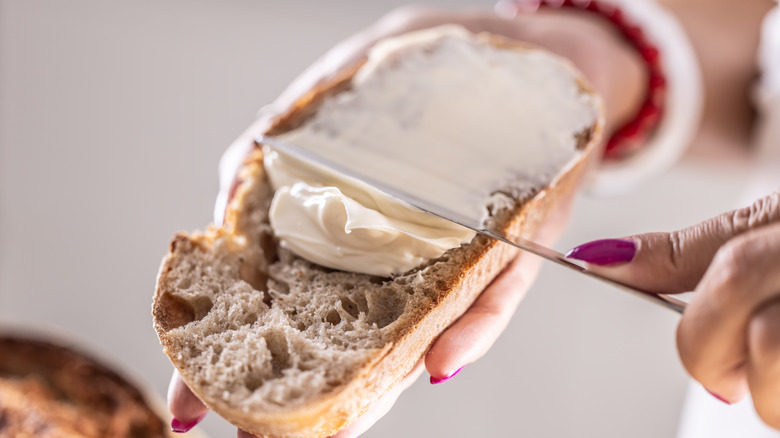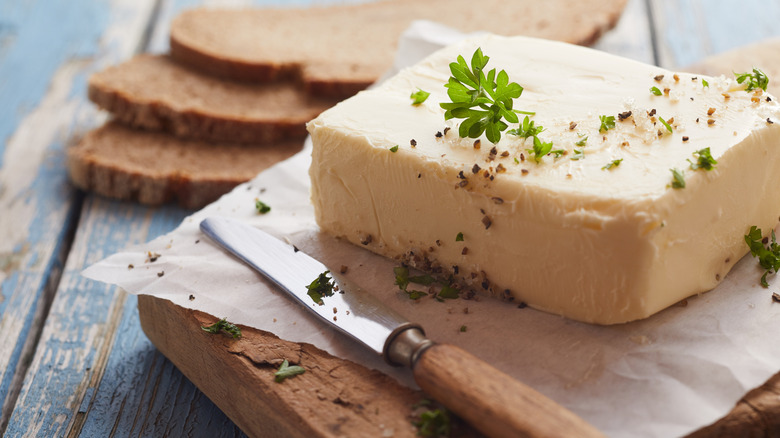Making Butter At Home Is Surprisingly Simple
Homemade butter might sound like an ambitious kitchen project, but it's surprisingly easy and can be a rewarding (and money-saving) culinary experience. The basic method involves just heavy cream and a bit of elbow grease. Traditionally, making butter required manual churning — a nostalgic nod to farmhouse kitchens — but modern kitchen tools make the process way easier. Making butter is one of those things you probably didn't know your stand mixer can do! If you really want to tap into your Nara Smith side, you can go full farmstead and purchase a butter churn like this one on Amazon, adding a touch of authenticity to your experience.
The process is straightforward: whipping heavy cream separates the butterfat from the buttermilk, leaving behind creamy, spreadable butter. While the flavor difference between homemade butter and the best store-brand butters could be up for debate, many agree that homemade butter offers unparalleled freshness and more of a customizable taste. It's an easy gateway to making compound butter by adding herbs, spices, or even honey to whip up delicious spreads tailored to your dishes.
That said, not everyone agrees it's worth the effort. Store-bought butter is consistent, convenient, and, for some, indistinguishable in flavor. But if you enjoy experimenting in the kitchen, or knowing exactly where your food comes from, making your own butter offers a tactile, satisfying connection to your food. Plus, it's a great way to impress dinner guests!
Tools and tips for the best homemade butter
While the idea of manually churning butter is charming, most modern home cooks opt for more efficient methods. Stand mixers are the go-to tool, as they make the process almost effortless. A hand mixer can also work well, though it may take a bit more time and patience akin to the traditional hand-churning method.
With a stand mixer, you'll just need a basic whisk attachment like this one. Essentially, you'll whip heavy whipping cream — the higher the quality, the better the butter — until you see butter start to solidify. Then, you'll pour out the excess buttermilk (save it for future recipes!) and press the solids through a fine mesh sieve or cheesecloth to get all of the liquid out. Then, in about 10 minutes, you'll have butter!
Once you've made your butter, you can customize it to elevate your cooking. Transform it into a savory compound butter by blending it with garlic and parsley for steaks or mashed potatoes. For a sweet touch, try cinnamon and honey. In the end, whether you're drawn by nostalgia, the desire for customization, or simply curiosity, making butter at home is an experience worth trying.

